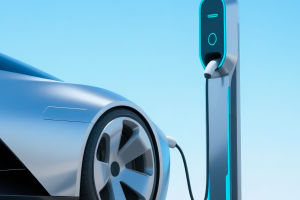Have you ever noticed how some cars catch your eye immediately—not just because of their shape or brand, but because of their color?
Maybe that bright red sports car makes you think of passion and speed, or a sleek black sedan suggests mystery and authority. But could the color of your car actually say something about you—your personality, your style, even how you want the world to see you?
This idea isn't just guesswork. Psychology research shows that color choices, including car colors, connect deeply with human emotion and identity. Let's take a closer look at what your car color might be telling others—and maybe even what it reveals about yourself.
The Psychology Behind Color Choices
Color is one of the most powerful nonverbal communication tools. It influences mood, perception, and even behavior. When it comes to cars, the color is often the first thing people notice—and it can set strong expectations before the engine even starts.
1. Expression of Personality: Choosing a car color is often a way to express personal identity. Bright colors can signal extroversion and a desire for attention, while neutral tones may reflect a preference for reliability and subtlety.
2. Cultural and Social Influences: Social norms and trends play a role too. White and silver cars have long been popular because they're associated with cleanliness and modernity. Meanwhile, bold colors like orange or yellow may appeal to younger drivers or those wanting to break from the crowd.
Decoding Popular Car Colors
Let's explore some common car colors and what they suggest about the driver's psychology:
1. White – Clean, Simple, and Modern: White cars often suggest that the driver values cleanliness, organization, and a fresh start. White reflects light and keeps the car cooler, which can also indicate practicality.
2. Black – Power and Elegance: Black is often linked to sophistication, authority, and mystery. Drivers who choose black cars may want to project confidence and control.
3. Red – Passion and Energy: Red grabs attention. It's the color of passion, speed, and excitement. Red car owners are often seen as bold, confident, and sometimes a bit rebellious.
4. Silver and Gray – Neutral and Balanced: These colors suggest professionalism, calmness, and high-tech appeal. They're practical choices that don't scream for attention but convey stability.
5. Blue – Trust and Calm: Blue cars often signal reliability, trustworthiness, and calm. It's a popular color among those who want a cool, relaxed image.
Choosing Your Car Color: Style or Statement?
When people pick a car color, the choice is rarely random. Here are some points to think about:
1. Practicality vs. Personality: Some drivers prioritize practical factors like maintenance or resale value, which often favors neutral colors. Others use color to make a personal statement.
2. Matching Mood and Lifestyle: A vibrant color might suit someone with an active social life or a bold personality, while a muted color might appeal to someone who prefers calm and subtlety.
3. Trends and Longevity: Car colors also follow trends. For example, the rise in popularity of SUVs has brought earth tones and greens into fashion, connecting with outdoor lifestyles.
What Does Your Car Color Say About You?
Now, think about your own car—or the one you hope to own. Does the color match how you see yourself? Or is it more about how you want others to see you? Sometimes, the color is less about self-expression and more about fitting in or standing out.
Whether you want to blend in quietly or turn heads, understanding the psychology of car colors adds a new layer of meaning to that shiny choice sitting in the driveway.
So, the next time you spot a color on the road that catches your eye, consider this: that car color might be the owner's silent message to the world. What message do you think your car sends? Would you ever choose a color just for what it says about you?


